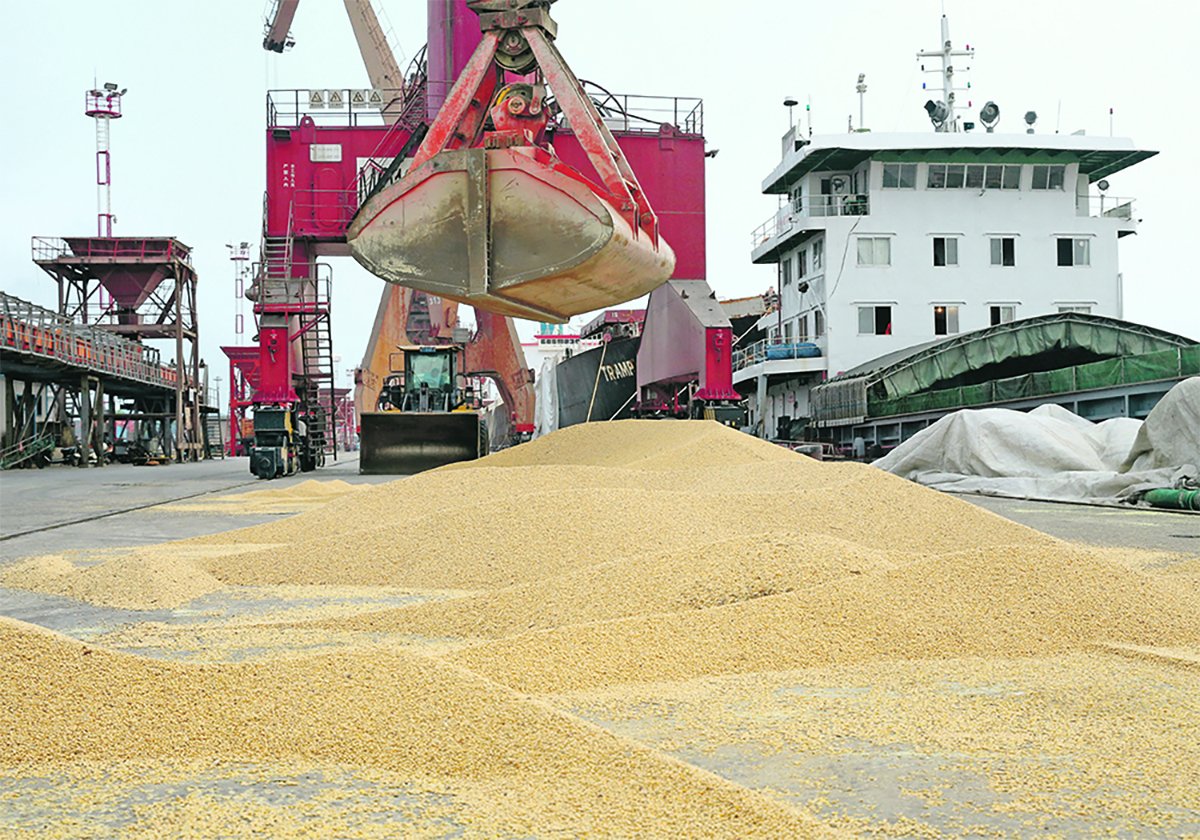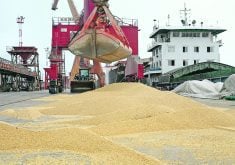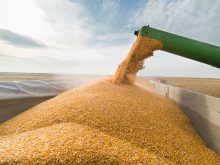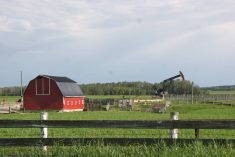Lower trend
The fed cattle market continued its seasonal decline last week, losing almost $2 from the previous week, said Canfax.
Steers averaged $87.94 per hundredweight and heifers averaged $87.59 in active trade with about 23,000 head sold.
Fed steer sales ranged from $86-$89.25 per cwt. live and $143.30-$148 rail, while heifers ranged from $86.35-$89.25 per cwt. live and $145-$146.30 rail.
The Canada to U.S. cash basis widened to $7.30 under from $4.94 under the week before. Canadian packers did most of the buying.
Two weeks ago, 8,239 head of fed cattle were exported to bring the year-to-date total to 369,594 head, up 14 percent from last year, but exports from Western Canada are up only four percent.
Read Also

U.S. soy subsidies will cause lasting damage to industry
Nothing illustrates the demise of world trade agreements more than the recent dispute between the United States and China.
Due to large placements in the first quarter of the year, fed cattle offerings are not expected to decline over the next 30-45 days, said Canfax.
Weakening cut-out values and ample supplies of fed cattle are expected to keep intact the seasonal decline in price.
Beef weakens
The beef market continues to struggle and packers were forced to lower prices to move beef.
Weekly kills in the U.S. have been large and packers have lots of product to move. Consumer demand is lackluster.
Choice cutout fell to $141.21 US per cwt. and Select was $135.31.
Canadian supplies are also large and prices have to drop to get product moving.
The Calgary wholesale market for delivery this week was at $155-$156 Cdn.
Light feeders dip
Heavy feeder steers saw a bit of a price recovery last week, likely due to the good moisture.
Feedlots are most likely reluctant to keep moving cattle in until pen conditions start to improve.
Feeder steers 800-900 lb. and heavier were 50 cents-$1 higher, 600-800 lb. were steady to $1.25 lower and light steers 300-600 lb. were $2.50-$3 lower.
Heifers 300-600 lb. were 50 cents-$1.75 lower, 600-800 lb. were 75 cents-$1.50 lower and 800-900 lb. and heavier were 75 cents-$2.50 lower.
Alberta auction market volume was about 19,500, up 12 percent from the week before and up seven percent from last year.
Feeder cattle exports for the week ending June 16 were 5,131, down 14 percent from the previous week.
The cow market was hot again with D1, 2 cows up $1 and D3 cows down 25 cents. Butcher bulls rose $1.50.
The volatility in the grain market will influence the price feeders are willing to pay for replacement animals.
The cow-calf pair market was strong with most trade at $900-$1,400 with tops to $1,620 and plain types $600-$850.
Bred cows in central and northern Alberta were mostly $850-$1,200 and plain types $550-$800.
Plain bred heifers in northern Alberta were $550-$840.
Feedlot record set
U.S. feedlot cattle supplies were the largest on record for June 1 due to a 13 percent increase in placements, said Reuters News Agency.
The U.S. Department of Agriculture report showed June 1 feedlot supplies at 101 percent of a year ago, or 11.272 million head, which was at the high end of trade estimates and the largest June 1 supply since 1996, when the current USDA reporting series began.
Placements in May were 113 percent of a year ago, or 2.159 million head, which topped the average trade estimate of 111.3 percent.
Marketings in May were 97 percent of a year ago, or 2.085 million head, versus the trade average of 98 percent.
The weight breakdown showed that much of the increase in placements came in the 700 lb. and heavier categories, which indicates that many of those cattle will be ready for market soon.
Hog prices peak
Strong demand for the July long weekend helped sustain pork and hog prices last week, but trade is expected to weaken this week.
Tight market-ready supply also supported prices last week.
Hog prices traditionally drift lower in summer.
Iowa-southern Minnesota hogs traded at $57.50 US per cwt. June 22, up from $54.50 June 15.
The U.S. composite pork carcass cut-out value was $78.04 June 22, up from $77.35 June 15.
Slaughter for the week is estimated at 1.93 million compared to 1.92 million the week before and 1.83 million a year ago.
Bison steady
Prices were steady last week and more slaughter animals are heading to the U.S., said the Canadian Bison Association.
Grade A carcasses from bison bulls younger than 30 months in the desirable weight range in Canada were $1.80 per lb. with sales to $1.90. Heifers were $1.60-$1.65.
Rail prices for top quality, youthful, older-than 30-month bulls and heifers were $125-$150 per cwt.
In light trade, cull cows were 40 cents per lb. hot hanging carcass.
The USDA reported June 11 that carcasses from bulls younger than 30 months rose to an average of $187.82 US per cwt. in May, up from $183.98 in April. Heifers were $167.21. Cull cows rose to $125.58 per cwt.
Lambs steady to strong
Ontario Stockyards reported 1,021 sheep and lambs and 141 goats traded last week.
All lamb, sheep and goats traded at steady to stronger prices.
Beaver Hill Auction in Tofield, Alta., reported 567 sheep and 222 goats traded June 11.
Grain-finished lambs were $10-$20 per cwt. stronger. Green lambs and sheep were $5 lower while sheep in good condition were $10 higher. Goats were steady to slightly stronger considering quality on offer.
Lambs lighter than 70 lb. were $128-$167 per cwt.
Lambs 70 to 85 lb. were $128-$163, 86 to 105 lb. were $120-$148 and 105 lb. and heavier were $125-$134.
Rams were $33-$80 per cwt. and cull ewes $35-$68 per cwt.
Bred ewes were $90-$120 per head and families were $100-$200.
Good kid goats were $151-$210 per cwt. Billy kids 70-90 lb. fetched more than $200.
Nannies were $50-$80 per cwt. and mature billies were $122.50-$204.














